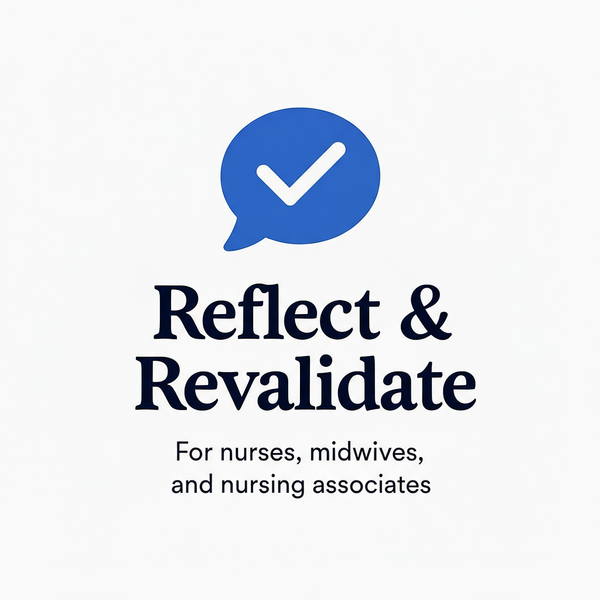Reflection: Learning from a Near-Miss Incident
Share
Submitted by: Sarah - Newly Qualified Adult Nurse, Medical Ward
What was the nature of the CPD activity and what did you hope to learn from it?
During a particularly busy morning shift, I was preparing to administer IV antibiotics to Mr. Davies (pseudonym). I had checked the prescription, prepared the medication, and was about to administer it when a senior nurse happened to walk past and asked which patient I was treating.
When I said 'Mr. Davies in bed 4,' she looked concerned and said 'That's Mr. Davis with an 'i', not Mr. Davies with an 'ie'—they're two different patients.' I had picked up the wrong patient's medication. If she hadn't happened to walk past at that moment, I would have given the wrong antibiotic to the wrong patient.
I was shaken by how close I had come to making a serious medication error. I hoped to learn from this near-miss, understand what went wrong, and develop strategies to prevent similar incidents in the future.
What did you learn from the CPD activity?
I learned that being busy is never an excuse for cutting corners with safety checks. I had been rushing because I had multiple tasks to complete, and I didn't perform all the required patient identification checks properly. I had relied on the bed number and surname without checking the patient's date of birth or asking them to state their name.
I learned about the importance of the 'five rights' of medication administration: right patient, right drug, right dose, right route, right time. I had focused on checking the drug, dose, route, and time but hadn't adequately verified I had the right patient.
The experience taught me about human factors in errors. I was tired, stressed, and distracted by the ward's busyness. These factors made me more prone to mistakes, and I needed to recognise when I'm at higher risk and take extra care with safety-critical tasks.
I also learned the importance of reporting near-misses. Initially, I felt embarrassed and wanted to forget about it, but my senior colleague encouraged me to complete an incident report. She explained that near-miss reporting helps identify system issues and prevents future errors—it's about learning, not blame.
How did you change or improve my practice as a result?
I now always perform full patient identification checks before any intervention, even when I'm busy. I ask patients to state their full name and date of birth, and I check their wristband every single time. I never rely on bed numbers or assumptions.
I've developed a personal safety routine for medication administration. I use the 'five rights' as a mental checklist, and I don't allow myself to be interrupted during the final checking process. If I am interrupted, I start the checking process again from the beginning.
I've also become more aware of my own limitations and risk factors. When I'm tired, stressed, or the ward is particularly busy, I consciously slow down and double-check my work. I've learned that it's better to take an extra minute to be safe than to rush and make a mistake.
Following this incident, I completed additional medication safety training and now feel more confident in my understanding of safe medication practices. I also actively encourage colleagues to report near-misses and errors, emphasising that this is how we learn and improve patient safety.
How is this relevant to the Code?
This reflection demonstrates several aspects of the NMC Code:
Preserve safety (13.1): I recognised a risk to patient safety (the near-miss) and took action to learn from it and prevent future incidents.
Practise effectively (6.1): I used my knowledge of safe medication administration to reflect on what went wrong and improve my practice.
Recognise and work within limits (13.2): I acknowledged that being busy and tired increased my risk of error and learned to adapt my practice accordingly.
Raise concerns immediately (16.2): I reported the near-miss incident through appropriate channels, contributing to organisational learning and patient safety.
Be accountable (10.1): I took responsibility for my near-miss, reflected honestly on what went wrong, and took steps to improve my practice.
Do you have any further comments?
This near-miss was a pivotal learning experience in my early nursing career. While it was frightening to realise how close I came to harming a patient, it taught me invaluable lessons about patient safety, the importance of following procedures, and the need for constant vigilance.
The supportive response from my senior colleague made a huge difference. Rather than making me feel ashamed, she helped me learn from the incident and emphasised that near-misses are opportunities for improvement, not reasons for punishment. This culture of learning rather than blame has shaped my approach to patient safety.
I now view every near-miss or error—my own or others'—as a chance to improve systems and practices. Patient safety isn't about being perfect; it's about being vigilant, following procedures, learning from mistakes, and continuously improving our practice.
